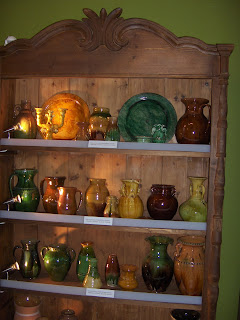
I have another story for you for today.
It's been a few days since we've seen any sun here--maybe a week or so, but cool to cold temperatures is one thing. Today had an extra, added dimension--very wet, intermittently very heavy, very cold rain. When I got home on Saturday after teaching all day, I discovered I didn't have my thumb drive/flash drive, the essence of my teaching with all the powerpoint presentations in the right order and the right revisions, etc. I
stewed about it for awhile but of course everyone was on their way out when I
was leaving Attistiba and I knew there was no one to contact over the weekend. I had also left my umbrella on my desk.
It was 4 a.m. or so when I woke up this morning and I knew I wasn't going back to sleep. By 7:30 I was getting bundled to go
out, to go to school and see if I could find the flash drive before someone else did--assuming that it really was still there where I'd taken it out of the
computer and not in some ditch having fallen out of a pocket when I took out a glove or my keys. Long johns, my winter hiking boots, three layers
on top with two zippered up to my chin and my winter coat with hood up, I
went out into the weather. It was still dark with street lights on--wretched
weather!! I could take a tram to my usual tram stop, then change, but I looked
at the first one that went by and it was sardine-like packed with people. So,
despite the intermittently driving rain I decided to walk the 15 minutes to my usual stop. There are three or 4 blocks of stores, shops and restaurants, then a very long park block before Latvia University then the shortcut to my tram stop at the National Opera.
Puddles here are a real hazard--cars come whizzing by on
the street, catch a puddle and easily spray the whole sidewalk up to the buildings. I've learned to walk on the right going down and coming back, as close the buildings as possible. I did not get plastered but there were one or two close calls, and the poor woman walking in front of me--like the Gatorade shower a winning football coach gets at the end of a successful season. I got to the street crossing just before the park and thought I could hear music through my muffled hood. By this time I'm mumbling to myself in my mind, "What idiot kid has his radio turned up that loud, or his window open--on a day like
today??" I looked but then street noise drowned out any other sounds. The
sound seemed to return, a little clearer the second time, a trumpet maybe,
coming from the park—there was street musician in the park, in the dark, in his usual place playing a song...................that I recognized. It did take me a while to come up with the name of the song--I had the jaunty tune and the rhythm first so that I was humming the Burt Bacharach(sp?) number. Then the artist singing, B.J Thomas and finally "Raindrops Keep Fallin' On My Head." By that time I had a grin from ear to ear and I laughed out loud. The grin??? Still there all day long. Oh, I did find my flash drive exactly where I had left it in the classroom, remembered my umbrella, managed to avoid a puddle-splash drenching and did dry out and get warm a couple times during the day--what a great day!
Bob


















































